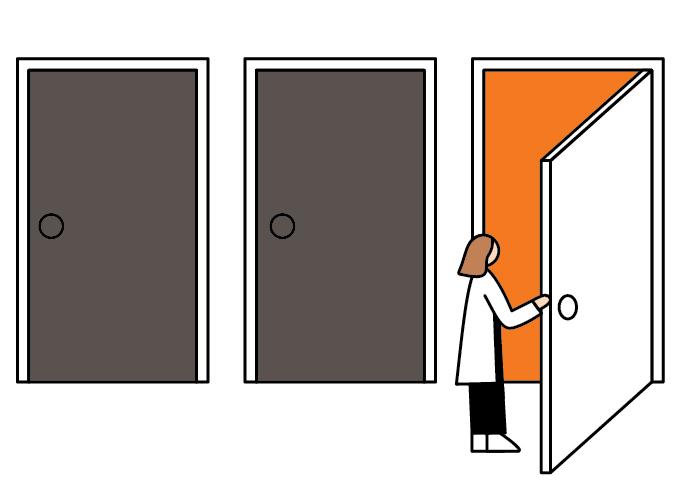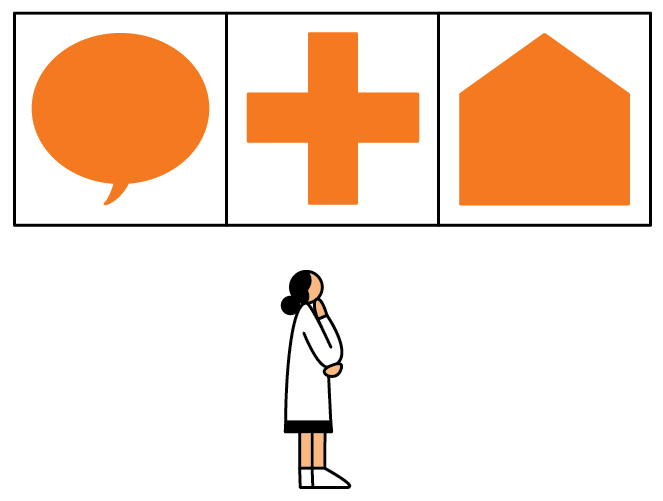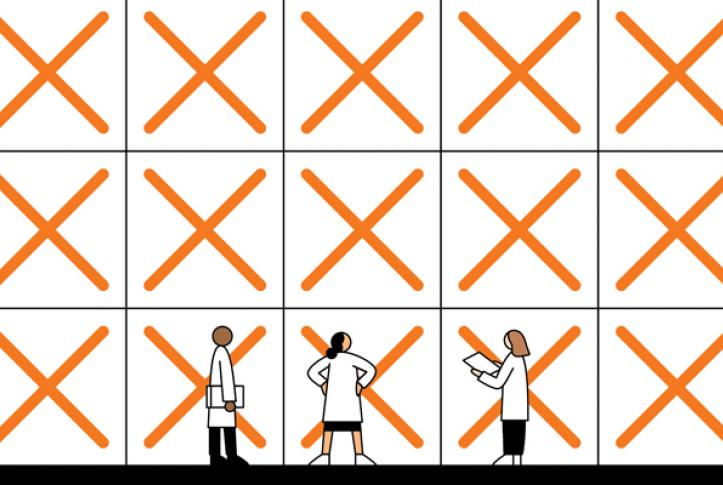Abstract
- ISSUE: Setbacks and outright failures are inherent to innovation and provide an opportunity for health care leaders to learn as they design new care models that improve health outcomes while reducing costs and unnecessary service use. Unfortunately, many organizations have not developed the discipline for learning from such challenges.
- GOAL: To share methods innovators used to develop new care models and overcome obstacles during their implementation, as well as lessons from their failures.
- METHODS: Interviews with care model innovators.
- FINDINGS AND CONCLUSION: When designing new care models, leaders should strive to understand which patients fail to benefit and consider changing staff to better meet patients’ needs. They should seek to identify which elements of their models are most essential and find common ground with health care payers on how to measure and reward success.
Introduction
During the past few years, Commonwealth Fund researchers have examined new models for delivering and paying for health care to better serve vulnerable patients, including people with multiple chronic conditions, serious illnesses, or functional limitations, as well as those at risk of developing health problems because of their social circumstances or behavioral health conditions. To spread promising approaches, we’ve showcased models that improve quality of care and health outcomes while lowering costs or reducing unnecessary health care use. Along the way, we’ve interviewed health care administrators, clinicians, researchers, and payers to learn how they developed and implemented these new approaches.
Because our case studies focused on successes, we missed an important part of the story: what innovators learned when things didn’t work out as planned. In circling back to ask this question, we soon learned these individuals didn’t view their setbacks as failures, but rather as opportunities to rethink and refine their models.
In this report, we share the methods innovators used for developing their models and overcoming obstacles — from deliberately searching for blind spots and using iterative testing to knowing when to quit. We’ve summarized their approaches and lessons here to help others as they design new health care models or adapt them to new settings.
Many of care models we’ve profiled rely on similar strategies, including:
- risk prediction and segmentation techniques to distinguish those who would benefit most
- proactive management of chronic diseases or serious illnesses
- managing transitions among clinicians and care settings
- identifying and addressing patients’ social needs.
The people and organizations developing these models also faced similar challenges: finding sustainable payment sources, recruiting the right staff, and obtaining support from leadership to institute new approaches, among many others.
Lessons Learned
1. When refining a new care model, examine which patients don’t benefit.
Shreya Kangovi, M.D., M.S.H.P., an internist, pediatrician, and health policy researcher at the University of Pennsylvania, led the team behind IMPaCT (individualized management for patient-centered targets). The program uses community health workers to help some of the poorest and sickest patients navigate the health system and achieve their goals, such as finding better housing or losing weight.

There’s a substantial subgroup of people who are discouraged by failure, and we just keep hitting them in the face with their failures.
Three randomized controlled trials demonstrated this approach helped many patients, but Kangovi wanted to know why it wasn’t effective for every individual.1 When her team began interviewing patients and accompanying community health workers on home visits, they found their explanation. “When some people hit setbacks like breaking their diet or having too many snacks, for instance, they saw them as learning opportunities,” she says. “But others had a very different reaction. They became really discouraged and blamed themselves. They stopped weighing themselves or checking their blood sugar. They just disengaged from the community health workers.”
Interviewing patients also revealed how their life experiences shaped their health behaviors. In one case, community health workers discovered that an obese woman struggling to lose weight had grown up poor and often hungry. Thus, a strict diet disrupted her sense of security. To uncover patients’ unconscious motivations and help them avoid shame, community health workers began asking them more open-ended questions and offering coaching to help recast their setbacks as opportunities to learn.
Mary Naylor, Ph.D., R.N., a professor of gerontology at the University of Pennsylvania who designed the Transitional Care Model in the early 1990s to reduce avoidable hospitalizations among older adults, also learned from studying the individual experiences of patients. At the time she created the model, sending advanced practice nurses into hospitals and patients’ homes during transitions — such as after a major illness or surgery — to help coordinate care and offer services was a novel concept.
Naylor sought to understand why some patients benefited from this support and others didn’t. When her team began poring over the data and conducting interviews with patients, families, and clinicians, they found having the same nurse practitioner visit patients in the hospital and their homes was pivotal because it engendered trust and led to clearer communication about their goals.2 Engaging family members was also essential to improve outcomes. “That emerged from deliberately studying the experience of patients over the long term. It was people telling us what was important to them,” Naylor says.
Program leaders have also relied on data to find blind spots. Denver Health, the largest safety-net provider in Colorado, conducted a cluster analysis to determine which patients might benefit from an intensive outpatient clinic it had created for those who had been hospitalized three or more times in a year. Data showed the clinic did a good job of engaging older, homeless men with substance abuse problems but was failing to recruit and retain others, including homeless women who had experienced trauma and Spanish-speaking patients who had high medical costs but otherwise led stable lives.3 By recognizing this issue, the health system is now designing tailored approaches to reach these groups, says Tracy Johnson, Ph.D., Denver Health’s former director of health reform initiatives.
But learning from failure is not always easy. One of the challenges of deliberately looking for blind spots, as these teams did, is that many health care organizations haven’t developed the discipline for doing so, says Don Goldmann, M.D., chief scientific officer emeritus and senior fellow at the Institute for Healthcare Improvement (IHI). “You need to have a culture where people aren’t going to be slammed for failing,” he says.
Goldmann remembers one quality improvement meeting during which a presenter displayed a run chart that clearly demonstrated her unit’s failure to sustain a new approach. “I asked why she was willing to share what was obviously not a success, and the presenter said, ‘I thought we were coming here to learn,’” he says. “There was a profound lesson there. She and her colleagues wanted others to help them figure out why they were unsuccessful, but medical culture doesn’t always encourage this kind of transparency.”
If we figure out there is something we can do better, we try it literally a day or a week later. It’s gotta be fast, and you’ve gotta be willing to fail. You actually have to plan to fail at first.
2. Don’t be afraid to try new approaches.
Iterative tests and creative problem solving are needed to refine new care models, but this might be easier in startup environments than in larger or more tightly regulated organizations. Rushika Fernandopulle, M.D., M.P.P., who launched Iora Health in 2010 to redesign primary care, adopted the Silicon Valley ethic of failing often and fast as a way of moving forward. Iora did this in Las Vegas soon after clinic leaders noticed that patient satisfaction was dropping as walk-in rates increased. The rush of same-day visits disrupted schedules and added to wait times. They decided to try adding a second track for walk-in appointments with a dedicated clinical team in hopes of keeping all teams on schedule.
“We were ready to test it the next morning,” Fernandopulle says. This rapid response was enabled by Iora’s weekly monitoring of the Net Promoter Score, in which patients are asked how likely they would be to recommend the organization to a friend or colleague.
Sometimes the signs that change is necessary are impossible to ignore. After a patient’s murder by her abusive husband, leaders of the Women’s HIV Program at the University of California, San Francisco, recognized their model was not meeting the unique needs of women, including those whose illness, and often substance use, were rooted in traumatic experiences such as sexual abuse or intimate-partner violence.

The tragedy prompted clinic leaders to ask patients about their adverse life experiences and offer different forms of therapy. They also continued to assess patient outcomes throughout treatment, since some patients who initially improved ended up relapsing. “We had to think through the steps, services, and interventions needed to solidify gains” and ensure patients who did relapse had support, says Edward Machtinger, M.D., the program’s director.
The team also recognized they needed a different approach for patients who were still in the throes of addiction and either didn’t engage or wouldn’t stay engaged in treatment. “What we’ve done is move toward early-phase interventions that are more focused on safety and stabilization,” Machtinger says. This includes a support group that focuses on reducing women’s isolation through shared meals and conversations. Counseling and creative art therapies also encourage patients to address past trauma.
3. Embrace change, even if that means saying goodbye to people.
As innovators gain insight into what does and doesn’t work for particular patients, they may need to disrupt established relationships, which can make patients and staff uncomfortable. This includes the relationship between care managers and patients who no longer require high-touch services.
Massachusetts General Hospital, which launched the Integrated Care Management Program in 2006 to provide nursing and social work support to patients with complex needs, found that some of its care managers were reluctant to let go of patients. “I see that throughout health care,” says Timothy G. Ferris, M.D., chairman and CEO of Massachusetts General Physicians Organization, which oversees the care management program. “You protect established relationships because those are the ones you know and you’ve already invested in.”
What can help: managing patients’ expectations at the outset by making clear that some services, like care management, are intended to be transitional. And for staff, stressing the importance of ensuring access for new patients may make it easier for them to let go of others.
Leaders at Mass General also found they needed to make clinical staffing changes to better meet patients’ needs. The program replaced all but one of its psychiatrists with psychiatric social workers, who were not only less expensive but also more effective at solving problems like lack of reliable transportation. Program leaders also brought in nurse practitioners from Mass General’s palliative care team to offer one-time consultations, often in patients’ homes, to help with care decision-making.

I would say the models are one-third of the story. The people who operate within the models are two-thirds.
Sutter Health, an integrated delivery system in Northern California, faced a similar challenge when it developed the Advanced Illness Management (AIM) program to help patients with terminal diagnoses manage symptoms and make end-of-life care decisions. Leaders recognized they needed a way to transition some patients to less intensive services once they were stable.
Today, most of the program’s patients receive four to six home visits by nurses and social workers and then receive check-in calls and case management services from telesupport nurses trained in the AIM approach. Staff review patients’ cases in daily huddles and can deploy nurses or social workers to cope with unexpected events, such as an after-hours call for severe pain or an emergency department visit. Sutter is also planning to use community health workers to expand its capacity to provide both telephone and in-person support.
Staffing changes were also part of scaling an innovative care model at CareMore, a medical provider that takes financial risk for serving Medicare and Medicaid beneficiaries in nine states and the District of Columbia. The company is known for providing frail and chronically ill people with medical and social supports. At neighborhood Care Centers, nurse practitioners, medical assistants, and other clinicians provide “high-touch” services like wound care or medication reconciliation, while “extensivist” physicians oversee patients’ care before, during, and after hospitalizations. Expanding this model into new markets meant recruiting more administrators and clinicians who could adapt to CareMore’s team-based approach and were comfortable questioning common practices, such as the intensification of treatment as patients with terminal conditions approach the end of life.4
Sachin Jain, M.D., M.P.H., CareMore’s CEO, says many innovators fail to pay enough attention to hiring people who are clinically skilled and motivated to serve. This is more likely to occur when leaders are under time constraints, such as when CareMore expanded into the Memphis, Tenn., market.
“When people start to scale new models, the first thing that goes out the window is the focus on people,” he says. “They think their model is what’s driving success, when in fact it’s some combination of the model and program design and having the right people to actually get things done. It’s remarkable the shift that can happen in the quality of performance once you get the right people in the right places.”
4. Know which parts of the model are essential.
Another common stumbling block for innovators is trying replicate their care models at other locations or institutions. Naylor of the University of Pennsylvania found as the Transitional Care Model was adopted by other health systems, home health agencies, and accountable care organizations (ACOs), some key components like home visits were being jettisoned. Helping adopters understand the value of each component required more tactical support than Naylor and colleagues had anticipated. “We failed to make clear that adopters needed to do more than screen just for medical risk,” she says.

Without continuously reinforcing the core elements of the program with clinicians, you really begin to see drift and variation. As providers we like to put our own spin on things, and that can lead you off course. It takes focused effort as you expand to keep everyone on course.
But once adopters began to consider social as well as medical risk, they began to gain greater traction, Naylor says. For example, one organization partnered with a food bank to prepare nutritious meals for heart failure patients who lacked social support.
Mass General encountered a similar problem when implementing its Integrated Care Management Program at another hospital within the system, Ferris says. Program developers didn’t realize for a full year that the other hospital wasn’t sending care managers to primary care practices to meet with physicians and patients. When asked why they hadn’t done so, these leaders said they had made compromises because of local circumstances, Ferris says. They also blamed program leaders for failing to differentiate between nice-to-have components and required elements. To Ferris, the experience emphasized the importance of providing ongoing support rather than just during implementation, and of making clear which elements were crucial to a program’s success.
Still, it’s important to understand that adopters will adapt models to their local circumstances. Bruce Leff, M.D., who developed the Hospital at Home program at Johns Hopkins Medicine in the mid-1990s to offer certain patients the option of hospital-level care at home, says he has grown accustomed to modifications to the model: “It’s like a custom-tailored suit. It gets reinvented wherever it is adopted as it is adapted to the local health care ecosystem.” Among the alterations are minor tweaks in the medical eligibility criteria for the program, changes in the types of staff deployed to patients’ homes, and differences in how the Hospital at Home service is combined with home-based primary care, palliative care, care transitions, and other offerings.
5. Seek consensus on how to measure and reward success.
Success does not always beget success, as the Hospital at Home program demonstrates. Even though Leff was able to show in a prospective, non-randomized trial that the intervention could cut spending on hospital services by as much as 30 percent while improving health outcomes, the model’s adoption has been hampered by lack of a payment mechanism in fee-for-service Medicare, as well as objections that it poses safety and liability risks.5 Those who are reluctant to adopt Hospital at Home often say they need more data to make a decision. But Leff sees this resistance as a smoke screen, obscuring health care leaders’ and clinicians’ reluctance to change and fear of losing revenue. “There has never been a randomized controlled trial of intensive care units and yet every hospital has one,” he says.
To overcome such resistance, innovators should agree with payers and health system administrators on which measures will be used to assess new approaches. Otherwise, programs that appear effective during pilots may run into obstacles when payers or administrators demand unduly high levels of evidence or immediate financial returns.
Richard J. Baron, M.D., president and CEO of the American Board of Internal Medicine (ABIM), says selecting the right method for evaluating new care models is critical because different audiences will find different methodologies persuasive. During his time as a group director at the Center for Medicare and Medicaid Innovation, Baron saw how separate evaluations of the same program could yield distinct results, depending on whether an actuary or a health services researcher was analyzing the data. So while a journal editor might insist on a randomized clinical trial to publish a study, insurance companies and the Centers for Medicare and Medicaid Services might find an actuarial approach more persuasive.
Demonstrating the broader societal impacts of new approaches may also help innovators win allies. “It’s not enough to think about whether we affect care and outcomes for the population we’ve targeted,” Naylor of the University of Pennsylvania says. “We need to look at the broader context: What impact did that have on use of resources from a societal perspective? We also need to consider what’s important to patients — how do they define success and failure?”
Some organizations are taking this more expansive view of success. For example, leaders of Hennepin Health, a county-led ACO serving Medicaid beneficiaries in Minneapolis, are measuring whether their investments in housing and rehabilitation result in savings in other high-cost areas, such as emergency shelters and jails.

Looking Ahead
One of the challenges for all innovators is that health care payers may not be willing to invest in their vision for transforming care. Payers may focus on improving the quality and lowering the cost of discrete and known procedures, such as knee replacements, rather than accomplishing patient-set goals, such as being able to play with grandchildren, says Baron of ABIM. “The people who are writing the checks need to own the responsibility for purchasing something different,” he says. The federal government can play a leading role in supporting new care models, but multipayer initiatives are key to obtaining widespread provider participation and impact.
Fernandopulle of Iora Health has been selective about payer contracts to ensure he can maintain fidelity to his model, which was designed to give physicians the time they need to forge trusting relationships with patients. Iora physicians work with small panels — about 650 patients compared with 2,000 or more in many practices — and rely heavily on health coaches, who meet with patients before and after appointments. Such a model wouldn’t be possible under traditional fee-for-service reimbursement, which is why Iora Health enters into capitation contracts with self-insured employers and health insurance companies. It also looks for payer partners willing to invest for the long haul.
“We’re changing human behavior and changing biology, and that just takes time,” Fernandopulle says. “You have to align the expectations of payers around that. That’s why we’re now signing 10-year contracts with our payers.”
Garnering financial and institutional support for new care models may become easier as health care continues to move toward value-based payment models that focus on results, not processes. Indeed, keeping the future in mind is key to making progress, says the IHI’s Goldmann.
“It’s not enough to talk about new scenarios while you continue doing what you’re doing,” he says. “You have to experiment with innovative approaches and recognize instances when what you’re doing now just won’t get you where you will need to be in the future. You’ll fail if you are not adaptable and agile.”
List of Interviewees
Richard Baron, M.D., President and CEO of the American Board of Internal Medicine
Paul B. Batalden, M.D., Senior Fellow, Institute for Healthcare Improvement
Maureen Bisognano, M.S., President Emerita and Senior Fellow, Institute for Healthcare Improvement
Rushika Fernandopulle, M.D., M.P.P., Cofounder and CEO, Iora Health
Timothy Ferris, M.D., CEO, Massachusetts General Physicians Organization
Don Goldmann, M.D., Senior Fellow, Institute for Healthcare Improvement
Sachin Jain, M.D., M.P.H., President and CEO, CareMore
Tracy Johnson, Ph.D., Former Director of Health Care Reform Initiatives, Denver Health
Shreya Kangovi, M.D., M.S.H.P., Associate Professor of Medicine, University of Pennsylvania
Sharyl Kooyer, R.N., Regional Administrator, Sutter Health
Bruce Leff, M.D., Director of Center for Transformative Geriatric Research, Johns Hopkins Medicine
Jeremy Long, M.D., Assistant Professor, Division of General Internal Medicine, Denver Health
Edward Machtinger, M.D., Director of Women’s HIV Program, University of California San Francisco.
Mary D. Naylor, Ph.D., R.N., Professor of Gerontology, University of Pennsylvania School of Nursing
David Share, M.D., M.P.H., Former Senior Vice President of Value Partnerships, Blue Cross Blue Shield of Michigan
Jonathan Weedman, M.A., Vice President of Population Health, CareOregon
